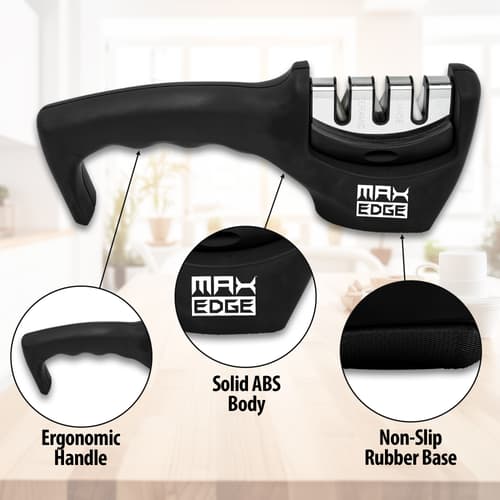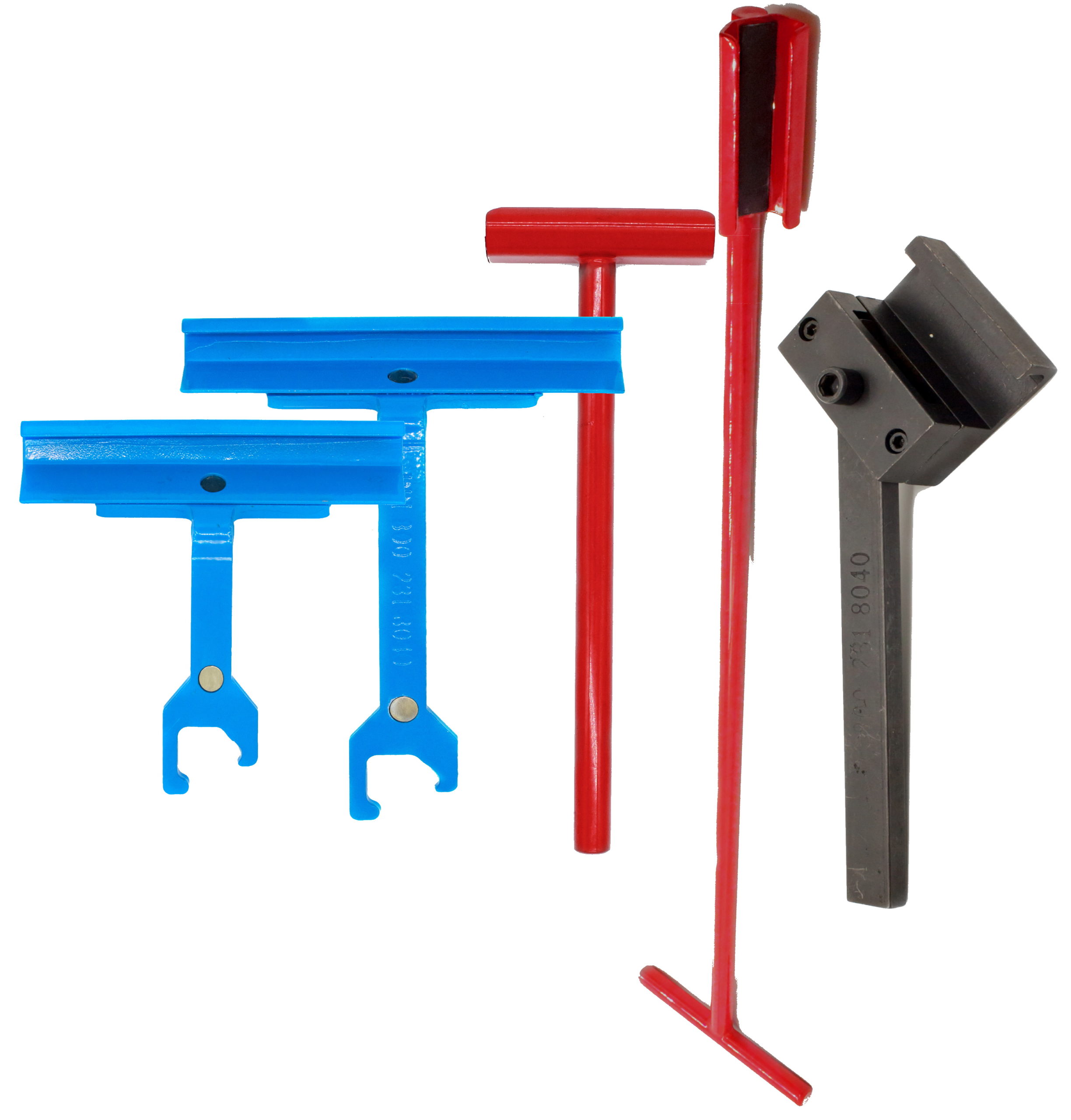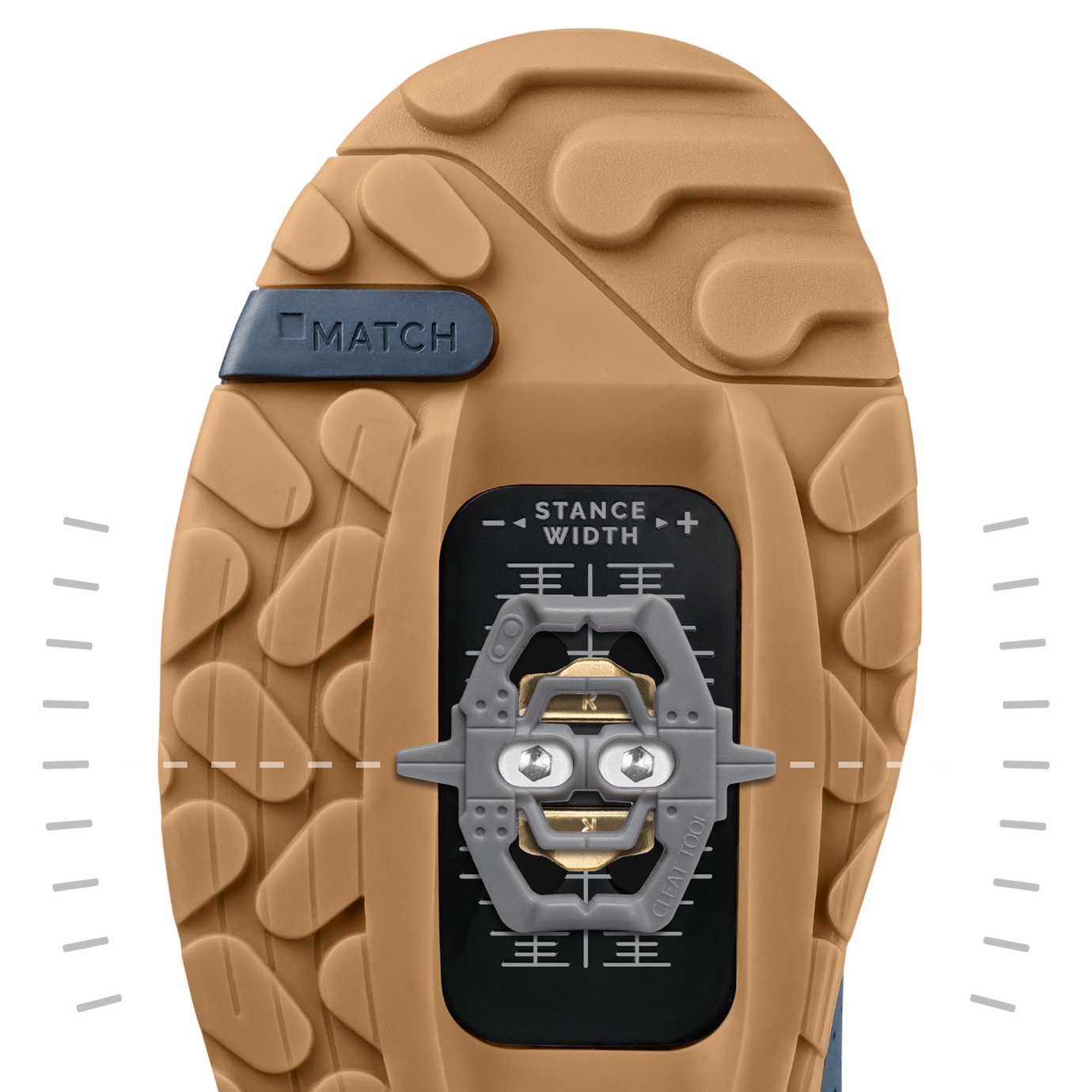Are you an athlete constantly striving for that extra edge on the field? Whether you're a seasoned professional or a weekend warrior, the condition of your cleats plays a pivotal role in your performance, grip, and stability. Worn-down cleats can lead to slips, falls, and a significant reduction in your agility, directly impacting your game.
This comprehensive article delves into the often-overlooked world of cleat sharpeners, indispensable tools designed to restore and enhance the traction of your athletic footwear. We'll explore their fundamental purpose, the myriad benefits they offer, the various types available, and crucially, how they contribute to a safer, more effective game. By understanding and utilizing these tools, you can ensure your footwear always provides the optimal grip needed for peak performance.
Table of Contents
- What Exactly is a Cleat Sharpener?
- Why Cleat Sharpeners are Crucial for Athletes
- The Diverse World of Cleat Sharpeners: Types and Designs
- Cleats vs. Spikes: A Critical Distinction
- How to Properly Use a Cleat Sharpener
- Beyond the Field: Unexpected Uses
- Debunking Misconceptions and Ensuring Safety
- Where to Find Your Ideal Cleat Sharpener
What Exactly is a Cleat Sharpener?
At its core, a cleat sharpener is a specialized tool designed to restore the integrity and effectiveness of the studs or "cleats" on athletic footwear. Over time, constant friction with the ground, especially on hard or abrasive surfaces, causes cleats to wear down, losing their sharp edges and, consequently, their ability to grip. A cleat sharpener helps in reshaping and sharpening these cleats to ensure better grip and performance on the field.
Resembling a file or a small grinder, these tools are primarily used to manually sharpen individual cleats. They come in various forms, from simple handheld files to more elaborate devices, but their fundamental purpose remains consistent: to bring back the angularity and bite of the cleat, allowing athletes to maintain traction, accelerate quickly, change direction sharply, and prevent slipping during critical moments of play. Without a properly sharpened cleat, an athlete's foundation on the playing surface becomes compromised, directly impacting their agility and stability.
Why Cleat Sharpeners are Crucial for Athletes
The impact of well-maintained cleats on an athlete's performance and safety cannot be overstated. Cleat sharpeners play a crucial role in several key areas:
- Enhanced Grip & Stability: The primary benefit is improved traction. Sharp cleats dig into the playing surface more effectively, providing superior grip, especially on wet or soft ground. This stability is vital for quick cuts, sudden stops, and powerful pushes.
- Improved Performance: With optimal grip, athletes can exert more force against the ground, leading to faster acceleration, more explosive jumps, and greater overall agility. Every step becomes more efficient, translating into a tangible advantage on the field.
- Injury Prevention: Slipping and losing footing are common causes of athletic injuries, ranging from sprained ankles and knees to more severe falls. Sharp cleats significantly reduce the risk of such incidents by ensuring consistent and reliable traction, allowing athletes to focus on their game, not their footing.
- Extending Cleat Lifespan: Rather than discarding expensive athletic footwear when the cleats wear down, a sharpener allows you to restore their functionality. This extends the life of your cleats, offering significant cost savings over time. It's an investment that pays for itself.
- Professional Recommendation: It's not just for amateurs. The large cleat cleaners are recommended for all levels of athletes, especially the pros! Professional athletes understand that every detail counts, and maintaining their equipment is paramount to their success and longevity in the sport.
The Diverse World of Cleat Sharpeners: Types and Designs
Just as there are various sports and playing conditions, cleat sharpeners come in various designs, but they typically feature an abrasive surface or blade designed to grind away worn material and create a new, sharp edge. The market offers a diverse range of products, catering to different needs and preferences. You can discover the perfect cleat sharpener for your needs from our diverse range of products.
Manual Sharpeners (File/Stone-based)
These are the most common types and often resemble traditional files or sharpening stones. They require manual effort to rub against each cleat, carefully reshaping it. Examples include:
- Cleat Sharpener Knife: Often a small, multi-purpose tool with a sharpening edge.
- Cleat Sharpener Pocket: Compact and portable, designed to fit easily into a pocket or gear bag for on-the-go sharpening.
- Cleat Sharpener Shield: A more robust design, possibly offering a handguard or a more substantial grip.
- Cleat Sharpener Wenger: Referring to a brand known for multi-tools, suggesting a versatile sharpener.
- Cleat Sharpener 16906: Likely a specific model number.
- Cleat Sharpener Arctic: Perhaps designed for cold-weather conditions or extreme durability.
- Cleat Sharpener Battling: Suggests a rugged, heavy-duty design for frequent use.
- Cleat Sharpener Blades: Refers to the replaceable or fixed sharpening elements.
- Cleat Sharpener Bundle: Often includes the sharpener with other cleaning tools or replacement parts.
- Cleat Sharpener Chest: Could refer to a larger, more comprehensive kit.
Many high-quality manual sharpeners utilize advanced abrasive materials. For instance, some feature a 3/8'' thick, rectangle, Arkansas stone ultra fine grade, translucent gray (MSC# 32864175 MFR# UHB14). This type of stone is renowned for its ability to produce extremely fine edges, ensuring maximum grip without damaging the cleat material.
Portable & Versatile Options
Portability is a key feature for athletes who need to maintain their cleats on the go. Many sharpeners are designed to be compact and durable:
- Trunk-Friendly Designs: Some are built to withstand rough handling, making them ideal for athletes. As one user noted, "Have it in the trunk, drop it on the pavement, and it doesn't move when I rub my foot back and forth against my golf cleats." This highlights their robust construction and stability during use.
- Multi-Sport Compatibility: A significant advantage of many cleat sharpeners is their versatility. They can be used for all types of cleats, whether for football, soccer, baseball, rugby, or even golf. This makes them a universal tool for athletes across different disciplines.
Cleats vs. Spikes: A Critical Distinction
It's crucial to understand that while "cleats" and "spikes" are both terms for specialized athletic footwear, they are distinct and serve different purposes. This distinction is vital when discussing cleat sharpeners.
Understanding Cleats
Cleats are used in grass sports like football, soccer, baseball, rugby. These sports require athletes to have maximum traction on natural or artificial turf surfaces. Cleats are typically larger, more robust studs, often made of plastic, rubber, or metal (though metal cleats are banned in some youth leagues for safety reasons). Their design allows them to dig into the ground, providing stability for lateral movements, sudden stops, and powerful pushes. The tips and edges of these cleats can become rounded or dull over time, which is where a cleat sharpener becomes invaluable.
Understanding Spikes
In contrast, track runners wear shoes called spikes. Spikes are much smaller, sharper, and often metallic pins that screw into the sole of a track shoe. They are designed for maximum grip on a synthetic track surface, allowing sprinters and distance runners to generate explosive power with each stride. Unlike cleats, spikes are not designed to be sharpened. In fact, attempting to sharpen track spikes would likely damage them or render them ineffective. As a viral TikTok video from mutation_d (@mutation_d) correctly states, "No such thing as a cleat sharpener for track spikes. There is no such thing as a cleat sharpener for track spikes." This is a common misconception that needs to be clarified: cleat sharpeners are exclusively for the larger, more durable studs found on field sports footwear, not the delicate pins of track spikes.
How to Properly Use a Cleat Sharpener
Using a cleat sharpener effectively requires a bit of technique to ensure you restore the cleat's performance without damaging the shoe. Here’s a general guide:
- Clean Your Cleats: Before sharpening, ensure your cleats are free of mud, dirt, and debris. A stiff brush or a dedicated cleat cleaner (like those found at Vevor, where you can find the perfect cleat cleaner and spike sharpener product) will help expose the true shape of the cleat.
- Inspect Each Cleat: Examine each individual cleat. Identify which ones are worn down, rounded, or have lost their edge. Focus your efforts on these.
- Position the Sharpener: Hold the cleat sharpener firmly. For manual file-like sharpeners, position the abrasive surface against the worn edge of the cleat. For blade-style sharpeners, align the blade with the cleat's profile.
- Apply Consistent Pressure: Using moderate, consistent pressure, rub the sharpener against the cleat. The goal is to remove a small amount of material to restore the original angular shape. Work in one direction, typically from the base of the cleat towards the tip, following its natural contours.
- Maintain the Angle: Pay close attention to the angle at which you're sharpening. Replicating the original angle of the cleat is key to restoring its effectiveness. Avoid over-sharpening or creating an overly acute angle, which could make the cleat brittle.
- Work Systematically: Sharpen each facet of the cleat until a new, crisp edge is formed. Repeat for all worn cleats on both shoes.
- Test and Refine: After sharpening, visually inspect the cleats. They should have distinct, sharp edges. If possible, test them on a similar surface to ensure improved grip.
Remember, patience and a light touch are key. You're aiming to restore, not remove excessive material. Regular, light sharpening is better than infrequent, aggressive sharpening.
Beyond the Field: Unexpected Uses
While primarily designed for athletic footwear, the robust and effective design of some cleat sharpeners lends itself to surprising utility in other areas. Their ability to scrape and clean can be quite versatile. For instance, one user found an unconventional but practical application: "Have it at the bank door and now using to get the snow off the bottom of my boots." This highlights how a durable, non-slip tool can be useful for removing packed snow, ice, or even mud from various types of footwear, preventing slips and tracking debris indoors. While not their intended purpose, it showcases the adaptability of a well-designed, sturdy tool.
Debunking Misconceptions and Ensuring Safety
Despite their clear utility, cleat sharpeners have sometimes been subject to misunderstanding or misrepresentation. It's vital to address these for clarity and to uphold the principles of E-E-A-T and YMYL.
Firstly, as established earlier, the notion of "no such thing as a cleat sharpener for track spikes" is accurate. Sharpeners are for field cleats, not track spikes. This distinction is critical for consumer safety and product efficacy.
Secondly, there have been instances where the very existence or purpose of these tools has been questioned. However, as Lance Lyles famously stated, "that was one image I sent to make known there is a such thing as cleat sharpeners." Their widespread availability and commercial presence (you can download cleat sharpener picture stock photos and use them in commercial designs under lifetime, perpetual & worldwide rights on platforms like Dreamstime, the world's largest stock photography community) unequivocally prove their legitimate existence and purpose within the sports equipment industry.
Finally, and perhaps most importantly, is the sensitive topic of misuse. While the primary function of a cleat sharpener is to enhance athletic performance, it's a sobering truth that "any object, in reality, can be used as a weapon." This point was raised in a context where someone "felt like he had to defend himself so any object, in reality, can be used as a weapon." While tools for sharpening cleats exist, and "there are multiple tools, and various tools for sharpening cleats… if aimed for necks, eyes, or chest," this statement refers to the potential for *misuse* of any object, not the intended design or purpose of a cleat sharpener. A cleat sharpener is designed for athletic equipment maintenance, not for causing harm. The responsibility lies with the user to employ such tools safely and for their intended purpose. Misinterpreting a cleat sharpener as a "cleat cleaver" or a dangerous implement is a "false thing" and deviates from its legitimate role in sports. Always use tools responsibly and for their intended function.
Where to Find Your Ideal Cleat Sharpener
Acquiring a quality cleat sharpener is straightforward, given their widespread availability. You can typically find them at:
- Sporting Goods Stores: Major retailers specializing in athletic equipment will often carry a selection of cleat sharpeners and related cleaning tools.
- Online Marketplaces: E-commerce sites offer a vast array of options from various brands. You can easily find the perfect cleat cleaner and spike sharpener product at Vevor, for example, or browse through other reputable online sports equipment suppliers.
- Specialty Outdoor/Sports Retailers: Stores like Sportsmans.com, which also offers a wide range of "fishing, rods & reels, camping gear, tents and much more," are likely to stock cleat sharpeners as part of their comprehensive athletic and outdoor equipment offerings. (Note: Sportsmans.com uses cookies to provide a better shopping experience.)
When purchasing, consider the type of cleats you primarily use, your budget, and whether portability is a key factor. Reading reviews and understanding the material of the sharpener (e.g., diamond grit, carbide, or natural stone like the Arkansas stone mentioned earlier) can help you make an informed decision.
Conclusion
In the demanding world of competitive sports, every advantage counts. Cleat sharpeners, though small, are mighty tools that offer a significant edge by ensuring your footwear provides optimal grip, stability, and performance. From extending the life of your expensive cleats to preventing potential injuries and boosting your agility, the benefits are clear. By understanding the different types of cleat sharpeners, how to use them correctly, and their crucial distinction from track spike maintenance, athletes can unlock their full potential on the field.
Don't let dull cleats hold you back. Invest in a quality cleat sharpener and make it a regular part of your equipment maintenance routine. Your performance, and your safety, will thank you. Have you used a cleat sharpener before? Share your experiences and tips in the comments below! And if you found this guide helpful, consider sharing it with your fellow athletes or exploring more of our articles on sports equipment maintenance.


